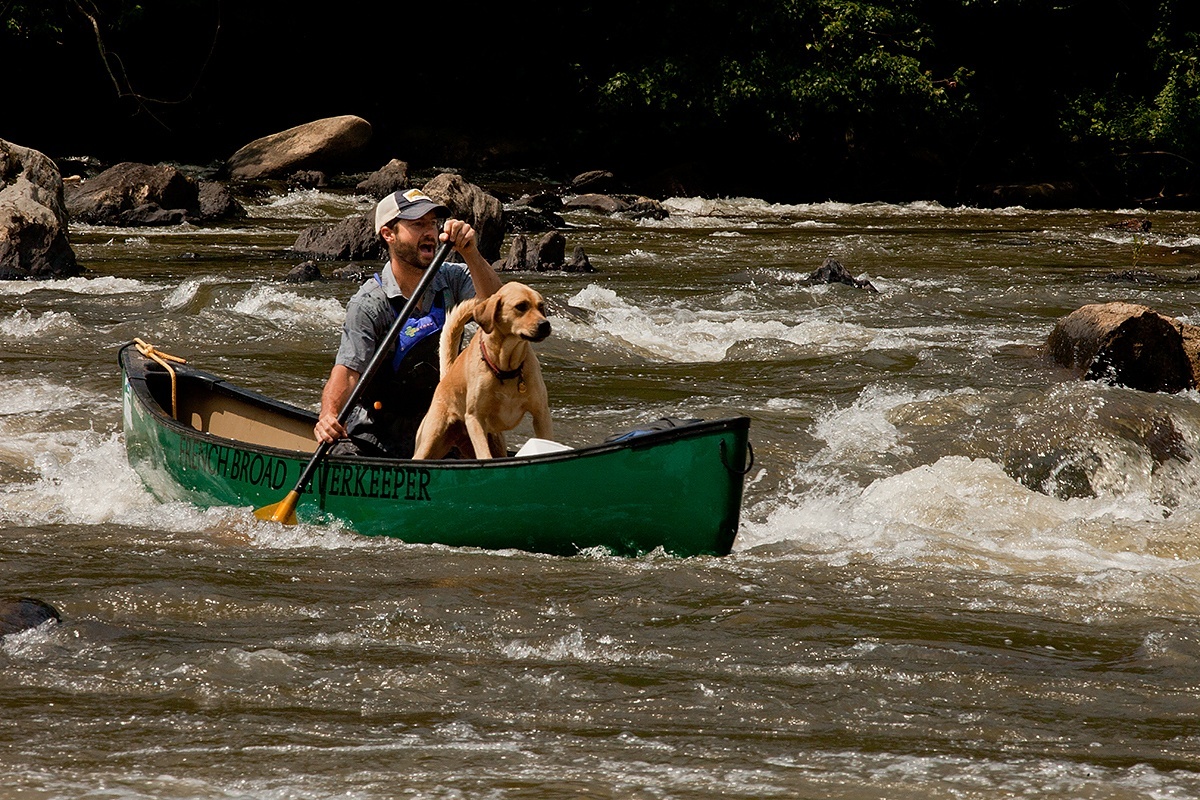
For months, French Broad Riverkeeper volunteers took samples to be tested for E. coli bacteria in the water along the Hominy Creek Greenway, a popular recreation spot in West Asheville, North Carolina, frequented by hikers, bikers, and people enjoying the sandy spit of beach. The problem? The samples consistently showed E. coli levels that were way above the safe swimming standards defined by the U.S. Environmental Protection Agency (EPA).
As we analyzed the data, and posted the results to our SwimGuide website, it became clear that there were some big problems upstream of the popular recreation park. The Hominy valley hosts myriad water quality concerns. It is a rapidly growing watershed with new houses, condos and ever expanding infrastructure. The remnants of old hazardous waste sites still loom over the creek, and a variety of agricultural operations fill the valley before heading uphill into Pisgah National Forest. Our search for the source of the consistently high levels of E. coli bacteria took us on water sampling adventures up and down the valley.
The source remained a mystery until we paddled by the only concentrated animal feeding operation (CAFO) in the valley. As we steered our canoe around the bend of the creek, the problem became immediately clear. The pungent odor that I have grown all too accustomed to when sampling sewage and animal waste hit us like a brick wall. The creek was full of a brown foamy liquid that was obviously raw sewage coming from a waste storage lagoon sitting a half mile beyond the tree line.

Our sampling results from this trip had such high levels of E. coli bacteria colonies that an accurate count could not be obtained, but were undoubtedly hundreds of times higher than safety standards. A report to the North Carolina Department of Environmental Quality (DEQ) was issued. In turns out that while the facility had been inspected recently, an extensive network of pipes and drains allowing raw animal waste to flow directly into the creek was never discovered by state officials. Thanks to the data we provided, DEQ was able to uncover one of the worst CAFO polluters in our region.
Currently DEQ, the EPA, and the North Carolina State Bureau of Investigation (SBI) are investigating the extent of the pollution and determining the punishment that will come from knowingly, illegally, and intentionally piping raw animal waste into a creek, mere miles from where families, children and pets routinely swim.
As our routine water sampling program continues in the coming months, we expect to see Hominy Creek take a big step toward finally becoming fishable and swimmable.